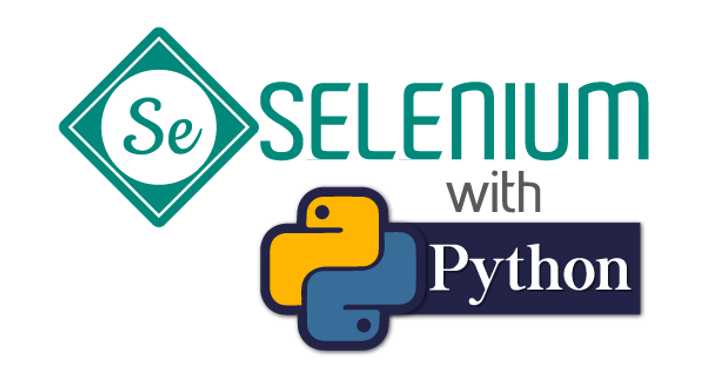In this article, we would be discussing scrum meetings and guidelines for conducting efficient Agile Scrum meetings.
What is Scrum?
Scrum is a mild framework that enables workers, team members, and companies to create value via flexible solutions for complicated problems. The Scrum framework usually requires a scrum master who must have undergone Scrum Master Training or Scrum Master Certification Training. The Scrum master is expected to build a work environment where a product owner can give out the job for the complicated problem. The complicated problem is further simplified into product backlogs.
What Is A Scrum Meeting All About?
A Agile scrum meetings is a fundamental component of the agile product development process. It is also referred to as Scrum ceremonies. Scrum meeting is a platform for team members to carry out tasks effectively, set project targets, and cooperate in finding solutions to problems. The product owner and the scrum master usually work together to schedule and lead every meeting.
Who are the Participants in The Scrum Meeting?
The key participants in the scrum meeting are typically members of the scrum team. The scrum team consists of a small group of people who work together to form a basic unit of scrum. In a typical scrum team, we have the product owner, the scrum master, as well as product developers. The scrum meeting participants consist of professionals who are solely focused on achieving the product objectives and goals.
Product Developers
Product developers are professionals in the scrum team who specialize in building usable product increments for each Sprint. The developers are typically individuals who have gone through the agile scrum certification online, and as a result, they possess a broad understanding of the agile scrum process. As a product developer, you are primarily responsible for:
- Developing a blueprint for the product and Sprint backlog.
- Ensuring optimum quality by following the laydown standards.
- Adjusting their plans from time to time to match with the product goals.
- Considering each other responsible for the entire work progress.
Product Owner
The product owner is referred to as an individual and not a committee. He or she is responsible for optimizing the product value by collaborating effectively with the rest of the scrum team. In some organizations, the product owner usually represents the demands of several stakeholders in the product backlog. As the product owner, you are to ensure adequate management of the product backlog by:
- Creating the product goals and communicating them effectively to the scrum master and the rest of the team.
- Creating the product backlogs and making them known to the teammates
- Ensuring transparency and proper understanding of the product backlogs
Scrum Master
The scrum master is the person in charge of the scrum team. To become a scrum master, you must take the scrum master certification training, which will fully equip you for the job. The scrum master oversees every activity of the team, including the agile scrum meetings. As a scrum master, you are helping every member of your team understand the scrum principles and practices. You are to ensure the efficient performance of every of your team members towards achieving the product goals. The duties of the scrum master include:
- Helping members of the team focus on building valuable increments that meet the product objectives.
- Ensuring that all scrum meetings hold and are effectively managed.
- Helping the developers clearly understand all the product backlogs.
- Establishing practical product planning for a hybrid product environment.
- Fast-tracking stakeholder cooperation with the rest of the scrum team.
The Ultimate Guidelines for Various Kinds of Agile Scrum Meetings
1. Sprint Planning Meetings
The sprint planning meeting is carried out to start the sprint process. It is the meeting where every team member gets to know what task they are performing for a particular sprint. Before the commencement of the meeting, the product owner provides a schedule for the product development process, usually referred to as product backlog. During the sprint meeting, the product owner meets with the scrum team to disclose the product backlog and take questions from the team members about the backlog.
As a product owner, you must provide clear answers to any question asked on the product backlog. In the meeting, the participants discuss the product backlogs to be carried out for a particular sprint. The timeframe for the sprint planning meeting usually varies with the sprint interval. A 2 two-week sprint usually lasts for 4 hours, whereas a 3-weeks sprint will last for 6 hours.
What to do in the meeting
- Delegate tasks to appropriate members of the team so that everyone can be carried along
- Have each of the developer team members discuss their task difficulties and let other members of the team proffer solutions; this will help enhance cooperation among the team members.
- Only issues about Sprint should be discussed in the meeting.
2. Daily Standup Meetings
The daily standup meeting is also referred to as the daily scrum. It is often regarded as the most crucial meeting of the day. It is a meeting where all scrum team members assemble around the scrum board and develop a plan for the day’s work. It is sometimes referred to as a situation update meeting as every team member has the opportunity to discuss their progress so far towards the product objectives. This keeps the entire team abreast of individual work progress. In every standup meeting, each team member should be able to answer these three questions including:
- What task did you perform yesterday?
- What will you do today?
- What challenges are you currently facing (if any)?
During the meeting, the scrum master is expected to point out obstacles and proffer adequate solutions to enhance work progress. The daily standup meeting is expected to last for 15 minutes.
What to do in the meeting
- Ensure strict adherence to the 15 minutes set time for the meeting. This can be accomplished by making use of stopwatches.
- Ensure that every participant of the meeting remains standing throughout the meeting period. There should be no provision for seats.
- Endure that you start the meeting at the stipulated time regardless of how many members are present at the set time.
- Don’t discuss any idea that is not on the meeting agenda.
3. Product Backlog enhancement meeting
Since there is no break between one Sprint and the next, the end of one Sprint immediately leads to the beginning of the next; this is why we have the backlog enhancement meeting. The meeting is often held towards the end of one Sprint to ensure the product backlog is concluded and prepared for the subsequent Sprint. During the meeting, the product owner enlightens the scrum team members about the key product features which must be developed urgently to meet customer needs. As a product owner, you are expected to simplify the items into user stories that are to be performed in the subsequent sprints; such that, by the end of the meeting, all the team members are well informed of all the new customer requirements that must be actualized in the next Sprint.

What to do in the meeting
- Make the meeting straightforward. You can’t do everything in one single session. Limit activities to only the essential tasks.
- Always ensure that the goal for each meeting is clearly stated and adhered to throughout the meeting period.
- You don’t need to invite everyone to the meeting, only the product owner should be present at all times. Invite only the key members of the development team depending on the agenda for the meeting.
4. Sprint Review meeting
During the sprint review meeting, the scrum team presents a developing product’s working prototype to the stakeholders. This prototype is usually referred to as a sprint demo. The scrum team also gives a report of tasks completed, what user stories have been accomplished, and newly added features on the software. A sprint review meeting is generally expected to last for one hour for every week of the Sprint. The session typically involves members outside the scrum team, such as investors, customers, and stakeholders.
What to do in the meeting
- You must get the product to work perfectly; nonetheless, focus more on ensuring that your product provides value to the end-users.
- Ensure usage of simple terms that are understandable by the outside participants while addressing the audience.
- Don’t disregard the feedback provided during the sprint review.
5. Sprint Re-examination Meeting
A spring re-examination meeting is usually carried out to discuss the team’s previous performance in the sprint circle. It is typically an insider meeting and doesn’t include any outsider compared to the sprint review meeting.
Each member of the team should give their opinion on the following questions:
- What process was executed correctly in the previous Sprint?
- What events didn’t go well?
- What can be done to improve it?
The scrum master should then provide a general submission on the way forward, considering the existing suggestions that each individual has made.
What to do in the meeting
- The agenda for every meeting must be set and agreed upon beforehand to the safe time during the session.
- When discussing problems encountered, avoid blaming any member of the team for any mistakes. Instead, all errors should be taken as a joint responsibility of the entire team.
So far, we have looked at several guidelines for conducting agile scrum meetings. You can apply these instructions in your scrum team to achieve highly productive meetings.




























